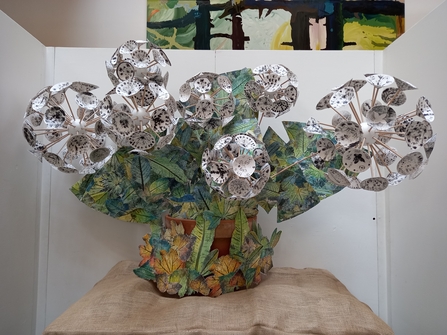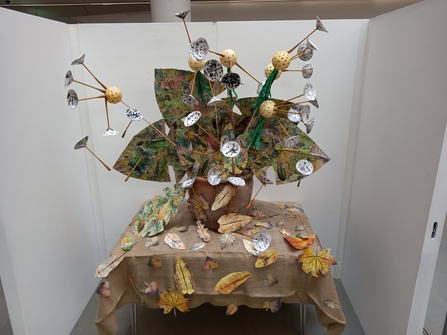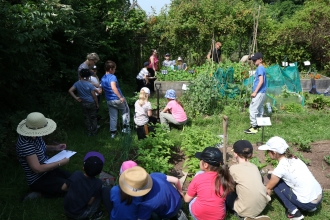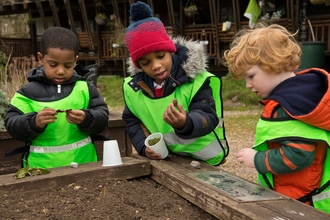Our cark park at Lower Smite Farm would not be considered the go-to place for inspiration for a collaborative art project. However, our wild art volunteer, Maggie Hobbs, was drawn into its wild edges when parking her car. Her creative eye fell on the textures, patterns and hues found in our common plants, often referred to as weeds.
Maggie’s role involves developing children’s connection with nature through art. Research by the University of Derby shows that exploring the beauty of animals and plants is key to building a deep relationship with nature. So, inspired by her car park encounter, Maggie suggested a new project engaging children with the weeds and getting them to see these plants in a new light through printing and watercolour.
In a serendipitous moment, I was also contacted by the Rivers Multiple Academy Trust, who run 16 schools, many of which are based in Worcestershire. They asked if we may be able to support them with their new enrichment programme.
I went to talk with their personal development team about Maggie’ s idea, now called the making the ordinary, extraordinary project. They loved the idea and we hoped to develop understanding about how weeds are wonderful plants in their own right and how plants are extraordinary, providing food, medicine and shelter for all living things including humans.
We also wanted to develop understanding of the extraordinary shape and structure of plants when we observe them closely.
In March 2025 we embarked on the three stages of the project:
- Training the schools' art leads in the printing and watercolour techniques needed.
- Hosting 240 pupils at Lower Smite to explore the project and create the artwork. These pupils then acted as leaders back in their schools to create in-school projects about weeds.
- Putting together nearly 500 pieces of artwork from the host days into three dandelion sculptures to be displayed at The Hive in Worcester – the ultimate weed!






